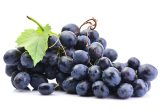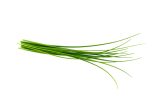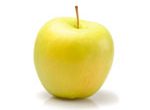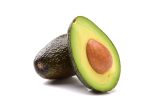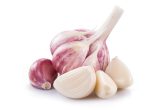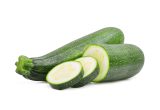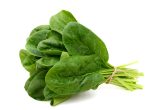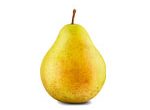Batavia

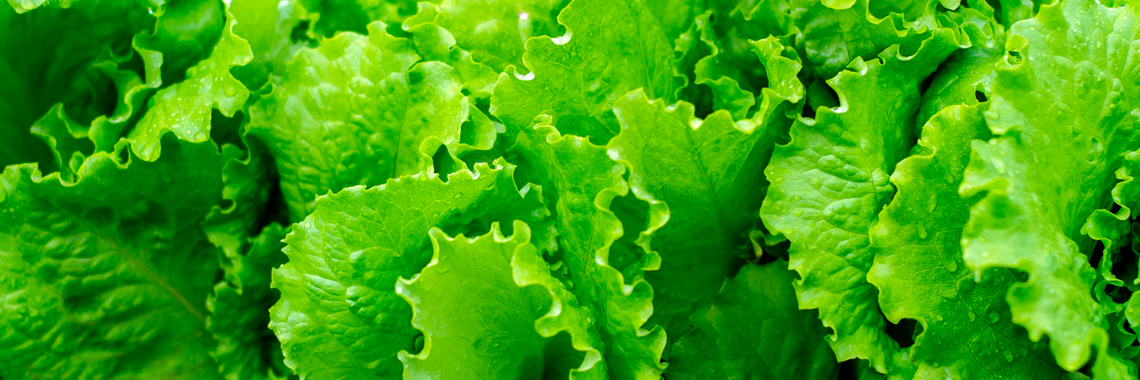
Description
- Batavia lettuce is a type of lettuce that belongs to the Asteraceae family, Lactuca genus, of the sativa species (INRA-URGI, 2019).
- Lettuce, the first leaf vegetable, is native to the eastern Mediterranean Basin (JS, 2019). There are six edible forms of lettuce: batavia, romaine, butterhead, leaf, latin and stem (Ryder, 1999).
- Batavia is subdivided into two forms: the “European” type batavia, which is fairly undeveloped elsewhere, and the “crisp” type batavia, also known as “iceberg”, which is widely used in fast food restaurants (B Maisonneuve, 2013).
PHYSICAL AND ORGANOLEPTIC CHARACTERISTICS
- All types of lettuce, except the crisp type of batavia, can be found with red and green leaves (Ryder, 2002).
- Batavia lettuce is apple-shaped, meaning that the young leaves are interlocking and more or less closed at the top. The crisp type of batavia has the particularity of being in the form of a hard apple, like a white cabbage, and of having very crunchy leaves (B Maisonneuve, 2013).
- Once cut, lettuce gradually turns brown because cutting promotes the biosynthesis of polyphenols that are oxidised by polyphenol oxidase (Murata, 2004). It has been demonstrated that crisp batavia lettuce cut and washed at 50°C has significantly lower polyphenol oxidase activity than lettuce cut and washed at 4°C and 25°C, throughout storage. These results are consistent with a sensory analysis in which the lowest browning scores were found in samples treated at 50°C (Martin-Diana, 2005).
- Experiments have shown that under anaerobic conditions, such as the storage atmosphere for packaged crisp batavia lettuce, organic acids are produced by lactic acid bacteria. These acids affect the sensory quality of freshly cut crisp batavia, including rapid browning, yellowing, unpleasant taste and loss of texture (Paillart, 2016).
COMPOSITION CHARACTERISTICS (excluding macronutrients, vitamins and minerals)
- Lettuce is one of the most widely consumed vegetables in the world. It is a good source of bioactive compounds with health benefits such as folate, β-carotene, lutein and phenols. In vitro and in vivo studies have shown anti-inflammatory, cholesterol-lowering and anti-diabetic activities attributed to these compounds. Nonetheless, they vary among different forms of lettuce: crisp-type batavia, the most popular in the United States, is relatively low in bioactive compounds (Kim, 2016).
- Lettuce also has protective effects on cardiovascular health due to its many varieties of bioactive components. They prevent tissue oxidation and participate in lowering blood pressure as well as mitigating myocardial damage (Tang, 2017).
- The major phenolic compound in six lettuce cultivars studied, including two butterhead lettuces, two batavia lettuces, one leaf lettuce, and one red-pigmented oak leaf variety, was reported to be dicafeyl tartaric acid. While total phenolics accounted for more than 60% of the total antioxidant capacity, dicafeyl tartaric acid accounted for 55% (Nicolle, 2004).
- Batavia and 24 other lettuce varieties were grown over two harvest periods. It was shown that lettuces harvested in July had higher total polyphenol content and antioxidant capacity than lettuces harvested in September. These results suggest that environmental conditions may influence the polyphenol content and antioxidant activity of lettuces like batavia (Liu, 2007).
*Average composition given as an indication: the following values are approximate and depend on variety, season, ripeness, cultivation conditions, etc. The data on polyphenols is taken from the Phenol-Explorer 3.0 database. All other data is taken from the Ciqual Table of nutritional composition of foods (2017) – ANSES, except for the Vitamin A equivalent which corresponds to the division of the Beta-carotene content by 6.
RAW
The following values are approximate and depend on variety, season, ripeness, cultivation conditions, etc. Batavia is low in energy*. On average, it provides 17.90 calories (kcal) per 100 g, i.e. 74.60 kJ.
COMPOSITION TABLES
For each nutrient, the tables provide information on the content, minimum and maximum values, as well as the percentage of the Dietary Reference Values (DRVs) for 100 g net of raw batavia. *Regulation (EC) No 1924/2006 of the European Parliament and of the Council of 20 December 2006 on nutrition and health claims made on foods.
MACRONUTRIENTS
| Constituent (g) | Average content |
Min-Max per 100g |
DRV% |
|---|---|---|---|
| Water | 95,6 | - | - |
| Fibers | 2,10 | - | - |
| Carbohydrates | 1,78 | 0 - NC | 0,68 |
| Sugars | 1,10 | - | 1,22 |
| Lipids | < 0,50 | - | - |
| Saturated fat | < 0,01 | - | - |
| Protein | 1,25 | - - 1,3 | 2,50 |
| Constituent (g) | Amount | Min-Max | DRV% |
|---|---|---|---|
| Water | Ciqual 2020 (valeur issue des analyses Ciqual-Aprifel 2017) | - | - |
| Fibers | Ciqual 2020 (valeur issue des analyses Ciqual-Aprifel 2017) | - | - |
| Carbohydrates | Ciqual 2020 | - | Règlement (UE) N°1169/2011 du parlement Européen, et du conseil du 25 octobre 2011Règlement (UE) N°1169/2011 du parlement Européen, et du conseil du 25 octobre 2011 |
| Sugars | Ciqual 2020 (valeur issue des analyses Ciqual-Aprifel 2017) | - | Règlement (UE) N°1169/2011 du parlement Européen, et du conseil du 25 octobre 2011 |
| Lipids | Ciqual 2020 (valeur issue des analyses Ciqual-Aprifel 2017) | - | Règlement (UE) N°1169/2011 du parlement Européen, et du conseil du 25 octobre 2011 |
| Saturated fat | Ciqual 2020 (valeur issue des analyses Ciqual-Aprifel 2017) | - | Règlement (UE) N°1169/2011 du parlement Européen, et du conseil du 25 octobre 2011 |
| Protein | Ciqual 2020 | - | Règlement (UE) N°1169/2011 du parlement Européen, et du conseil du 25 octobre 2011 |
Zoom on carbohydrates
- Raw batavia contains a lower amount of carbohydrates (1.78 g per 100 g) than the average for this macronutrient in raw vegetables: about 4.45 g per 100 g.
- These are mainly fructose (0.60 g per 100 g), glucose (0.50 g per 100 g) and mannitol (0.50 g per 100 g).
Zoom on fibres
- Raw batavia provides a significant amount of fibre, 2.10 g per 100 g.
- This amount is slightly lower than the average amount found in raw vegetables (2.43 g per 100 g).
Zoom on proteins
- Its protein content (1.25 g per 100 g) is lower than the average amount found in raw vegetables (1.87 g per 100 g).
Zoom on lipids
- Batavia contains less than 0.5 g of fat per 100 g, meaning it is fat-free*.
Regulation (EC) No 1924/2006 of the European Parliament and of the Council of 20 December 2006 on nutrition and health claims made on foods.
MINERALS AND TRACE ELEMENTS
| Constituent | Average content |
Min-Max per 100g |
DRV% |
|---|---|---|---|
| Calcium (mg) | 26 | - | 3,25 |
| Chloride (mg) | 60,63 | - | 7,58 |
| Copper (mg) | 0,04 | - | 4 |
| Iron (mg) | 0,39 | - | 2,79 |
| Iodine (µg) | < 20 | - | - |
| Magnesium (mg) | 8,70 | - | 2,32 |
| Manganese (mg) | 0,28 | - | 14 |
| Phosphorus (mg) | 17 | - | 2,43 |
| Potassium (mg) | 200 | - | 10 |
| Selenium (µg) | < 20 | - | - |
| Sodium (mg) | 6 | - | - |
| Zinc (mg) | 0,16 | - | 1,60 |
| Constituent | Amount | Min-Max | DRV% |
|---|---|---|---|
| Calcium (mg) | Ciqual 2020 (valeur issue des analyses Ciqual-Aprifel 2017) | - | Règlement (UE) N°1169/2011 du parlement Européen, et du conseil du 25 octobre 2011 |
| Chloride (mg) | Ciqual 2020 (valeur issue des analyses Ciqual-Aprifel 2017) | - | Règlement (UE) N°1169/2011 du parlement Européen, et du conseil du 25 octobre 2011 |
| Copper (mg) | Ciqual 2020 (valeur issue des analyses Ciqual-Aprifel 2017) | - | Règlement (UE) N°1169/2011 du parlement Européen, et du conseil du 25 octobre 2011 |
| Iron (mg) | Ciqual 2020 (valeur issue des analyses Ciqual-Aprifel 2017) | - | Règlement (UE) N°1169/2011 du parlement Européen, et du conseil du 25 octobre 2011 |
| Iodine (µg) | Ciqual 2020 (valeur issue des analyses Ciqual-Aprifel 2017) | - | Règlement (UE) N°1169/2011 du parlement Européen, et du conseil du 25 octobre 2011 |
| Magnesium (mg) | Ciqual 2020 (valeur issue des analyses Ciqual-Aprifel 2017) | - | Règlement (UE) N°1169/2011 du parlement Européen, et du conseil du 25 octobre 2011 |
| Manganese (mg) | Ciqual 2020 (valeur issue des analyses Ciqual-Aprifel 2017) | - | Règlement (UE) N°1169/2011 du parlement Européen, et du conseil du 25 octobre 2011 |
| Phosphorus (mg) | Ciqual 2020 (valeur issue des analyses Ciqual-Aprifel 2017) | - | Règlement (UE) N°1169/2011 du parlement Européen, et du conseil du 25 octobre 2011 |
| Potassium (mg) | Ciqual 2020 (valeur issue des analyses Ciqual-Aprifel 2017) | - | Règlement (UE) N°1169/2011 du parlement Européen, et du conseil du 25 octobre 2011 |
| Selenium (µg) | Ciqual 2020 (valeur issue des analyses Ciqual-Aprifel 2017) | - | Règlement (UE) N°1169/2011 du parlement Européen, et du conseil du 25 octobre 2011 |
| Sodium (mg) | Ciqual 2020 (valeur issue des analyses Ciqual-Aprifel 2017) | - | - |
| Zinc (mg) | Ciqual 2020 (valeur issue des analyses Ciqual-Aprifel 2017) | - | Règlement (UE) N°1169/2011 du parlement Européen, et du conseil du 25 octobre 2011 |
Zoom on minerals and trace elements
- Raw batavia contains a significant amount of manganese and potassium as it provides the equivalent of:
- 14% of DRVs for manganese, i.e. 0.28 mg per 100 g;
- 10% of DRVs for potassium, i.e. 200 mg per 100 g.
- It also provides the equivalent of 7.58% of DRVs for chloride, i.e. 60.63 mg per 100 g.
- The amount of other minerals and trace elements is less than 5% of DRVs.
VITAMINS
| Constituent | Average content |
Min-Max per 100g |
DRV% |
|---|---|---|---|
| Provitamin A Beta-carotene (µg) | 891 | - | - |
| Vitamin A equivalent (µg) | 148,50 | - | 18,56 |
| Vitamin B1 (mg) | 0,042 | - | 3,82 |
| Vitamin B2 (mg) | < 0,01 | - | - |
| Vitamin B3 (mg) | 0,20 | - | 1,25 |
| Vitamin B5 (mg) | 0,079 | - | 1,32 |
| Vitamin B6 (mg) | 0,051 | - | 3,64 |
| Vitamin B9 (µg) | 65,6 | - | 32,80 |
| Vitamin C (mg) | 4,38 | - | 5,48 |
| Vitamin E (mg) | < 0,08 | - | - |
| Vitamin K1 (µg) | 20,60 | - | 27,47 |
| Constituent | Amount | Min-Max | DRV% |
|---|---|---|---|
| Provitamin A Beta-carotene (µg) | Ciqual 2020 (valeur issue des analyses Ciqual-Aprifel 2017) | - | - |
| Vitamin A equivalent (µg) | Calcul à partir de la valeur Provitamine A Béta-carotène* | - | Règlement (UE) N°1169/2011 du parlement Européen, et du conseil du 25 octobre 2011 |
| Vitamin B1 (mg) | Ciqual 2020 (valeur issue des analyses Ciqual-Aprifel 2017) | - | Règlement (UE) N°1169/2011 du parlement Européen, et du conseil du 25 octobre 2011 |
| Vitamin B2 (mg) | Ciqual 2020 (valeur issue des analyses Ciqual-Aprifel 2017) | - | Règlement (UE) N°1169/2011 du parlement Européen, et du conseil du 25 octobre 2011 |
| Vitamin B3 (mg) | Ciqual 2020 (valeur issue des analyses Ciqual-Aprifel 2017) | - | Règlement (UE) N°1169/2011 du parlement Européen, et du conseil du 25 octobre 2011 |
| Vitamin B5 (mg) | Ciqual 2020 (valeur issue des analyses Ciqual-Aprifel 2017) | - | Règlement (UE) N°1169/2011 du parlement Européen, et du conseil du 25 octobre 2011 |
| Vitamin B6 (mg) | Ciqual 2020 (valeur issue des analyses Ciqual-Aprifel 2017) | - | Règlement (UE) N°1169/2011 du parlement Européen, et du conseil du 25 octobre 2011 |
| Vitamin B9 (µg) | Ciqual 2020 (valeur issue des analyses Ciqual-Aprifel 2017) | - | Règlement (UE) N°1169/2011 du parlement Européen, et du conseil du 25 octobre 2011 |
| Vitamin C (mg) | Ciqual 2020 (valeur issue des analyses Ciqual-Aprifel 2017) | - | Règlement (UE) N°1169/2011 du parlement Européen, et du conseil du 25 octobre 2011 |
| Vitamin E (mg) | Ciqual 2020 (valeur issue des analyses Ciqual-Aprifel 2017) | - | Règlement (UE) N°1169/2011 du parlement Européen, et du conseil du 25 octobre 2011 |
| Vitamin K1 (µg) | Ciqual 2020 (valeur issue des analyses Ciqual-Aprifel 2017) | - | Règlement (UE) N°1169/2011 du parlement Européen, et du conseil du 25 octobre 2011 |
Zoom on vitamins
- Raw batavia is high in vitamin B9 as it provides the equivalent of 32.80% of DRVs, i.e. 65.60 µg per 100 g.
- It is also a source of:
- vitamin K1 as it provides the equivalent of 27.47 % of DRVs, i.e. 20.60 µg per 100 g;
- vitamin A as it provides the equivalent of 18.56 % of DRVs, i.e. 148.50 µg per 100 g.
- The quantity of other vitamins represents less than 6% of DRVs.
Calculation performed: Beta Carotene / 6 + retinol
POLYPHENOLS
Nutrition and health claims
According to the definitions of nutrition claims as set out in Regulation (EC) No 1924/2006 on nutrition and health claims, and in view of the composition of batavia, the following claims may be used:
NUTRITION CLAIMS OF RAW BATAVIA
- Low in energy (100 g of raw batavia provide less than 40 kcal)
- High in vitamin B9 (100 g of raw batavia provide more than 30% of DRVs)
- Source of vitamin K1 (100 g of raw batavia provide more than 15% of DRVs)
- Source of vitamin A (100 g of raw batavia provide more than 15% of DRVs)
- Fat-free (100 g of raw batavia contain less than 0.5 g of fat)
- Low in sugar (100 g of raw batavia contain less than 5 g of sugar)
HEALTH CLAIMS (for a consumption of 100 g of raw batavia)
Folates or vitamin B9
- Folates contribute to:
- maternal tissue growth during pregnancy,
- normal amino acid synthesis,
- normal blood formation,
- normal homocysteine metabolism,
- normal psychological function,
- normal function of the immune system,
- reduction of tiredness and fatigue.
- Folates have a role in the process of cell division.
Vitamin K1
- Vitamin K1 contributes to:
- maintenance of normal bones,
- normal blood clotting.
Vitamin A
- Vitamin A has a role in the process of cell specialisation.
- Vitamin A contributes to:
- maintenance of normal skin,
- maintenance of normal mucous membranes,
- maintenance of normal vision,
- normal iron metabolism,
- normal function of the immune system.
References
- Agence nationale de sécurité sanitaire de l’alimentation, de l’environnement et du travail. Table de composition nutritionnelle des aliments Ciqual 2020. Consultée le 14/09/2020 depuis le site internet Ciqual https://ciqual.anses.fr/
- B Maisonneuve. 2013. Salades – Les différents types de laitues cultivées [en ligne]. [Consulté le 21/02/2020]. Disponible à l’adresse : http://ephytia.inra.fr/fr/C/6042/Salades-Les-differents-types-de-laitues-cultivees.
- INRA-URGI. 2019. GnpIS – Taxon : Lactuca sativa f. Laitue pommée gr. Batavia sgr. Batavia européenne [en ligne]. [Consulté le : 21/02/2020]. Disponible à l’adresse : https://urgi.versailles.inra.fr/siregal/common/card.do?id=5139&dbName=common&className=genres.taxonomy.TaxonImpl.
- JS. 2019. Site WEB GAFL – Collection Laitue INRA [en ligne]. [Consulté le 21/02/2020]. Disponible à l’adresse : https://www6.paca.inra.fr/gafl/CRB-Legumes/Nos-Collections/Collection-Laitue.
- Kim MJ, Moon Y, Tou JC, Mou B, Waterland NL. Nutritional value, bioactive compounds and health benefits of lettuce (Lactuca sativa L.). Journal of Food Composition and Analysis. 2016;49(1):19-34.
- Liu X, Ardo S, Bunning M, Parry J, Zhou K, Stushnoff C, Stoniker F, Yu L, Kendalla P. Total phenolic content and DPPH radical scavenging activity of lettuce (Lactuca sativa L.) grown in Colorado. Food Science and Technology. 2007;40(3):552-7.
- Martin-Diana AB, Rico D, Barry-Ryan C, Mulcahy J, Frias J, Henehan G. Effect of Heat Shock on Browning-Related Enzymes in Minimally Processed Iceberg Lettuce and Crude Extracts. Bioscience, Biotechnology, and Biochemistry. 2005;69(9):1677-85.
- Murata M, Tanaka E, Minoura E, Homma S. Quality of Cut Lettuce Treated by Heat Shock: Prevention of Enzymatic Browning, Repression of Phenylalanine Ammonia-lyase Activity, and Improvement on Sensory Evaluation during Storage. Bioscience, Biotechnology, and Biochemistry. 2004,68(3):501-7
- Nicolle C, Carnat A, Fraisse D, Lamaison JL, Rock E, Michel H, Amouroux P, Remesy C. Characterisation and variation of antioxidant micronutrients in lettuce (Lactuca sativa folium). Science of Food and Agriculture. 2004;84(15):2061-69.
- Paillart M.J.M, Van der Vossen J.M.B.M, Lommen E, Levin E, Otma E.C, Snels J.C.M.A, Woltering E.J. Organic acids produced by lactic acid bacteria (Leuconostoc sp.) contribute to sensorial quality loss in modified-atmosphere-packed fresh-cut iceberg lettuce. ISHS Acta Horticulturae. 2016;1141(1):289-96.
- Règlement (CE) N° 1924/2006 du Parlement européen et du Conseil du 20 décembre 2006 concernant les allégations nutritionnelles et de santé portant sur les denrées alimentaires.
- Règlement (UE) N°432/2012 de la Commission du 16 mai 2012 établissant une liste des allégations de santé autorisées portant sur les denrées alimentaires, autres que celles faisant référence à la réduction du risque de maladie ainsi qu’au développement et à la santé infantiles.
- Règlement (UE) n°1169/2011 du Parlement européen et du Conseil du 25 octobre 2011 concernant l’information des consommateurs sur les denrées alimentaires, modifiant les règlements (CE) n°1924/2006 et (CE) n°1925/2006 du Parlement européen et de Conseil et abrogeant la directive 87/250/CEE de la Commission, la directive 90/496/CEE du Conseil, la directive 1999/10/CE de la Commission, la directive 200/13/CE du Parlement européen et du Conseil, les directives 2002/67/CE et 2008/5/CE de la Commission et le règlement (CE) n°608/2004 de la Commission.
- Ryder EJ. (1999). Lettuce, endive and chicory. Wallingford : CABI Publishing, 208 p.
- Ryder EJ. (2002). The new salad crop revolution. Trends in new crops and new uses. Virginia : ASHS Press Alexandria, 412 p.
- Tang G, Meng X, Li Y, Zhao C, Liu Q, Li H. Effects of Vegetables on Cardiovascular Diseases and Related Mechanisms. Nutrients. 2017;9(8):857.




